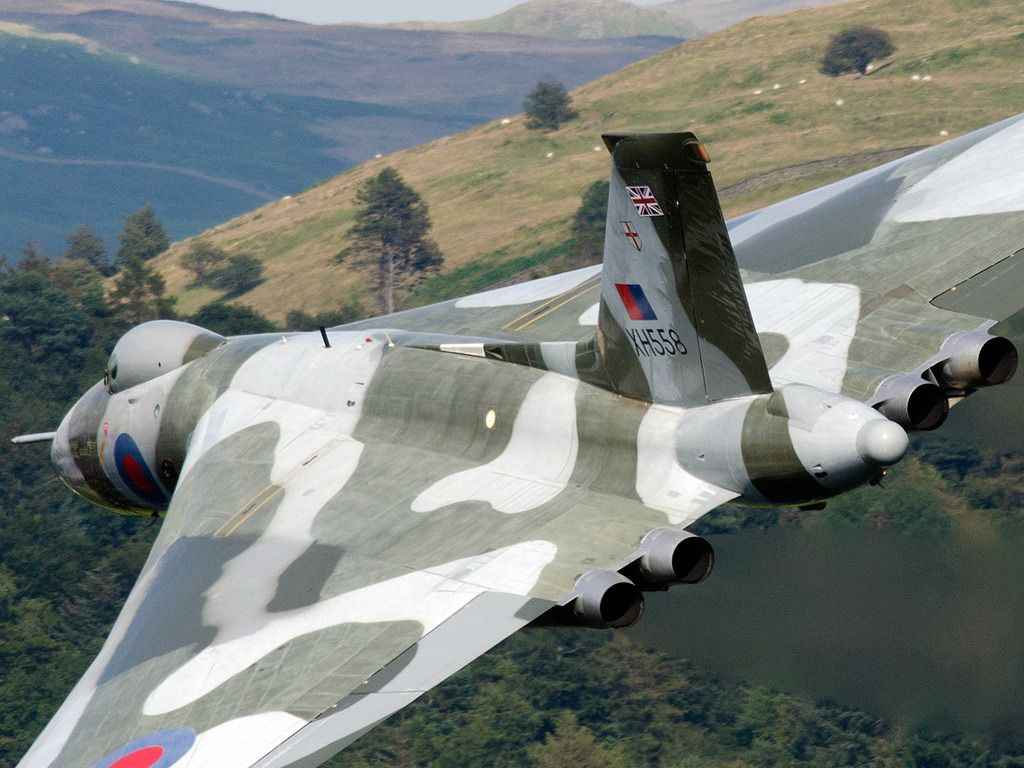The Vulcan was one of the three types which made up the UK's "V-Force", it's strategic bomber fleet capable of delivering nuclear warloads over the USSR. When you look at that plane, it's hard to imagine its prototype first flew over Farnborough in 1952 (even though the delta planeform has become old-fashioned). A mere 7 years separate that event from the end of WWII, and it's amazing the strides that aeronautics and jet propulsion made during that short time span.
The RAF operated the Vulcan from 1956 to 1984. It is probably best remembered as the plane that bombed the Port Stanley runway free of Argentine aviation during the Falkland Wars. CDR Sharkey Ward's allegations about the stupidity of sending an entire fleet of Vulcans from Ascension (using a refueling scheme that ultimately allowed only one or two planes to drop bombs) may be true. But I guess he seriously underestimated the psychological impact on the Argentines. Not to mention the galvanizing effect on the home front.
The RAF accepted its first Vulcan B.1's in 1956; the improved Vulcan B.2 appeared in 1960. The B.2 featured a larger wing, more powerful engines, ECM and improved electrical systems. Although the Vickers Valiant and the Handley Page Victor were sound designs too, it was the Vulcan which was the backbone of the UK's airborne nuclear deterrent during the 'better' part of the Cold War.

What a bird!!! Length 30m, wingspan 30m, maximum speed 0.96.
Vulcans are powered by four Rolls-Royce Olympus engines, originally known as Bristol BE.10's "Olympus". They are two-spool axial-flow turbojets. The arrangement is two pairs positioned close to he fuselage, not unlike the configuration of the Vulcan's civil contemporary the Comet.

Pity I can't elaborate. Only so many hours in a day. Good night, hope you enjoyed the video.
MFBB.